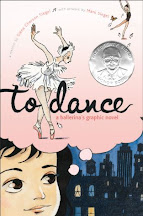Beginner Readers:
1. Hale, S., Hale, D., & Pham, L. (2019). The princess in black. (Pham, L. Illus.) Candlewick Press.

Everyone knows that princesses don't wear black. Everyone, that is, but Princess Magnolia who by day is the glass slipper-wearing, tiara-toting picture perfectly pink monarch that her kingdom knows and loves, but once the monster alarm blares, turns into The Princess in Black. Young readers will be delighted as the P.I.B. defends her kingdom from the Monsters that come through the door to their realm to feast on her people's goats, hog ties them, and sends them back to the monster realm! They are sure to cheer her on as she tries to get back to the castle in time to stop the sneaky duchess from discovering her secret!
Readers are sure to share in her triumph as they finish conquering the 14 chapters of this title. With it's large-type font, spacing, and comical illustrations, this transitional book is perfect for readers who are ready for a challenge after early readers, but aren't quite ready to jump into your typical chapter book. Speaking of Illustrations, Hale's comedic timing is perfectly mirrored in Hale's colorful scenes. From a sparkly unicorn shedding its disguise to turn into the black steed of the P.I.B.- to the wildly rainbow monsters that just want to eat some goats, readers will surely be as enraptured with the illustrations as they are with the story itself.
2. Pizzoli, G. (2019). The book hog. Disney Hyperion.


Graphic Novels:
1. Arnold, T., Hamilton, M., & Weiss, M. (2018). Noodleheads see the future (T. Arnold, Illus.). Holiday House.

Tedd Arnold somehow manages to perfectly join together the absurdity of middle school humor, with classical folktale tropes from around the world in a graphic novel. At first glance, the Noodleheads are simply two macaroni noodles without a braincell between them, bumbling through their day in a way sure to make young readers cackle.


Upon further inspection, (and a visit to the Author's Notes) readers see the utilization of several folktale motifs that are used in tales of fools. Not only will young readers be clutching their sides laughing at the antics of these well-meaning but foolish brothers, but they are also getting a chance to learn about story structure and motifs.

The illustrations by Arnold are brightly colored and accessible, using a font akin to Comic Sans to convey the noodle brothers' lack of seriousness. But it is not all fun and games, Arnold astutely states in his notes that "Noodlehead stories make children aware of the problems that can be caused by being gullible". Though readers may laugh along with the noodles' mistakes, they also can learn from them along the way
2. Siegel, S. C. (2006). To dance: a ballerina’s graphic novel (M. Siegel, Ed.). Atheneum Books for Young Readers.



3. Wang, J. (2019). Stargazing. First Second.
Fans of Turning Red will love this coming-of-age story about two young girls figuring out just what amount is "Asian enough" and how that makes them relate to each other. Christine is a straight A student, she speaks Chinese, and plays the violin. Moon doesn't have very good grades, she wears nail polish and likes to dance, she doesn't speak Chinese, and she's convinced that the celestial beings she sees in her visions will someday soon take her away back to her home planet. But when the "celestial beings" turn out to be caused by a tumor pressing on her brain, Moon must undergo surgery and Christine realizes she doesn't want her friend to lose all of the things that make her Moon.



With colorful illustrations by Wang and Lark Pien, Stargazing addresses the ups and downs of middle school friendships in a way that is appealing to readers aged 8 and older. Though many would consider this middle grade fiction, it's themes of identity and friendship are poignant for any age group, and its graphic format and K-pop references make it accessible to even the most reluctant of readers.






No comments:
Post a Comment